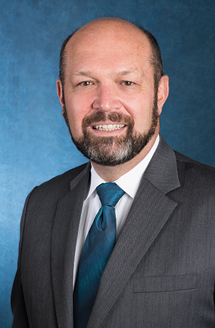
Richard C. Friedberg, MD, PhD
When talking with patients, I find that most really want to understand what is happening to them. Many simply expect what they see on TV: The primary caregiver gathers the evidence and an instrument gives the diagnosis. I learn a lot from these conversations, especially when I take time to process them. Thinking about what is happening to a specific patient leads to why, and then to what that implies. This leads to what new skills or capabilities we will need and how we are going to develop them. Which raises questions about time.
“Having the time” and “taking the time” to grow our skills are relative assessments; we find a way to do what we value most. When I cannot get around to something, I may have to admit that either I haven’t thought it through or it just isn’t as important to me as I had believed. I know that everything must be considered in context, and a need to nourish our capabilities is no exception.
Whether or not we feel the time is right for us as individuals, growing new skills is not optional for our profession. In Massachusetts, where mandated coordinated care started eight years ago, health care reform has meant more patients but not proportionately more physicians, more procedures but not proportionately more funding. These evolutionary changes are now playing out across the United States. As pathologists, we may be among the first to recognize that as opportunities and responsibilities grow arithmetically, the importance of teamwork and coordination grows geometrically.
Evolution is neither good nor bad, but it is inevitable. Consider how much clinical informatics and molecular diagnostics have evolved over the past decade. Think about the fact that the CAP Biorepository Accreditation Program approved its first facility in June 2012 and there are now 42 accredited biorepositories. Some of us are natural explorers and others are inclined to resist change, but denial of the obvious is not good for anyone. Inertia is incompatible with quality-driven thinking.
Learning a new technology can (and perhaps should) induce anxiety, which is why we talk about what we are doing, would like to be doing, and are learning. We need to help one another identify and embrace our place in the greater context. If we don’t talk about where we may fit in as systems naturally evolve, we may not have the requisite skills when the time is ripe to act on new opportunities in our communities and practice settings.
The ability to provide cutting-edge services, including those requiring knowledge of emerging technologies, is in the back of every hiring manager’s mind. This credential is a critical differential for applicants and a way to identify excellence among peers. We look up to those who are most curious and enjoy those who like to talk about new ideas.
To clarify a technical point for a clinical partner or fellow member of the laboratory team is to show respect for their ability and a willingness to help them grow. And if the meaning of what is in our reports is somewhat obscure, we should consider providing both a clinical interpretation and guidance for next steps. Increasingly, that is the handoff.
We can optimize the quality of communication with clinical colleagues by helping them become comfortable with new technologies. The CAP Short Presentations on Emerging Concepts, or SPECs, are well suited to this purpose. SPECs are customizable PowerPoint presentations focused on selected diseases where molecular testing plays a key role in patient management. The CAP Personalized Health Care Committee has developed 11 SPECs and has been adding two new topics each year. They are well suited to grand rounds, tumor boards, and other small group settings, and CAP members can download them by searching on “SPECs” from the home page. Check them out.
The CAP Pathology and Laboratory Quality Center is another case study in the power of intentional communication. Most practice guidelines and consensus statements from the Center are the collaborative work of two or more specialty groups. These partnerships foster clarity while enabling us to embrace more concerns with more relevance and in more depth. For example, the Center recently sought comment on draft guidelines for the workup of acute leukemia that were developed in partnership with the American Society of Hematology. Responses have come in from pathologists, hematologists, and oncologists in 22 countries.
Increasingly, physicians and regulators are allowing nurse practitioners and physician assistants to function more independently. This means that more health care can be provided, but it also means that physicians provide a smaller proportion of that care. Pathologists know a lot about balancing worthy goals against limited resources. We can enhance the perceived value of our services to caregivers by providing our input at their level of understanding. We cannot know who is ordering every laboratory test and interpreting each report, but we can make test order forms and laboratory reports more user-friendly by cleaning up the technical jargon.
It might be where you’re from. It might be what you do. But measures of value are relative. For those who deeply value stability, change can be threatening and ambiguity exacerbates anxiety-driven resistance. So we need to consider how we communicate, both what we say and how it is understood. Respectful give-and-take will foster relationships that enable all members of our health care teams to know they are part of a culture firmly centered on working together to achieve what is best for our patients.
[hr]Dr. Friedberg welcomes communication from CAP members. Write to him at president@cap.org.
 CAP TODAY Pathology/Laboratory Medicine/Laboratory Management
CAP TODAY Pathology/Laboratory Medicine/Laboratory Management
